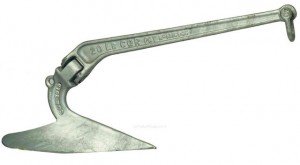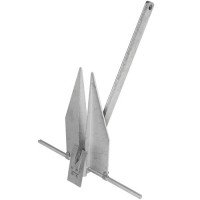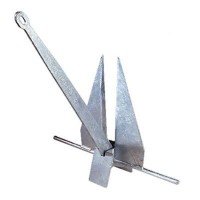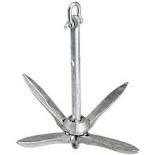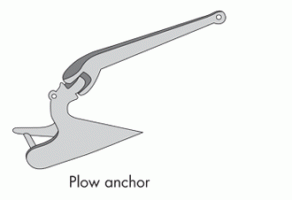Archive for April 28, 2014
Anchors and Anchoring 101
April 28, 2014This article is just a quick view on anchoring and anchors, this should point you in the right direction and what questions you may want to ask anchor manufacturers before you buy.
I would highly recommend you always buy an anchor larger than the footage requires. I own a 40′ trawler sundeck and it takes on a lot of windage, so I like to use an anchor required for a 45′ boat. I sleep much better at night. I use all chain and use snubbers (bridles) to absorb the shock, it’s two pieces of 12′ long three strand nylon rode secured to my front cleats, and on the other end there is a hook that secures to my anchor chain. It goes down into the water till there is tension, this will greatly reduce shock loads on your boat and your anchoring system as well as your windless due to the bridles elasticity. If your using all rode make sure you put a long piece of chain on the end of your anchor to prevent chafing of your rode on the seabed, it also gives your anchor a better angle while setting.
There are many different anchors on the market, here are some of the more popular ones:
The CQR anchor is one of the more popular selections amongst Skippers. Later on they added a swivelling head which will slowly reset itself on a 360 degree turn on a soft bottom seabed. It is inexpensive and effective, this is why it has earned the trust of many skippers. The holding power works best on seabeds, sand, mud, gravel, and clay. It does not do as well in weed, and it is bad in coral and rocks.
The Bruce is also a very good selection it has a signal pedal shaped fluke, when deployed it will settle down and reset itself on a 360 degree turn in any soft bottom seabed without breaking out. The holding power works best on the following, sea beds, sand, mud, gravel, and clay, but not well in weed and is bad in coral and rocks.
The Danford comes in many different styles, the flukes could have wide inner ends, longer and sharper flukes, a 90 degree swivel or even a roll bar. It has immediate holding power, it digs down deep and is difficult to brake out of the seabed. Holding power is better gripping in mud, sand, clay, weeds, not good on rocky bottoms.
The Fortress is a newer model of the Danford. It looks like the Danford, but the big difference is it is made of light-weight aluminum. One of the employees of the Danford company left and just about copy-catted their anchor. It purposefully works much better, lighter and stronger. Effect: immediate holding power. It digs down deep, and difficult to break out of the seabed. Holding power is better gripping in mud, sand, clay, weeds, not good on rocky bottoms.
The Grappling anchor, this is your anchor for coral and rocky bottoms it can be used to for dragging the bottom to retrieve a lost item.
Scope is the length of your anchor line you wish to let out. It is the distance from your boats deck to the sea bottom. Recommended scope is 5’x1′ so 10 ‘ to the bottom, you would need 50′ (10′ x 5′ = 50’). The more scope the better holding power, 3 to 1 is very weak.
Holding Power settings guide:
2×1 = 10% holding power 3×1 = 40% 5×1 = 70% 7×1 = 85% 10×1 = 100%
Power setting and retrieving an anchor:
Setting your anchor, make sure your anchor is set. Back down very slowly, then when the anchor begins to set increase your engine load, when you feel it is dug in stop.
Anchor retrieval: Retrieve your rode so you’re positioned right over you anchor, snub your line on a cleat, power down backwards slowly to break the anchor off the bottom. Do not break the anchor while in forward, it will require more energy.
Soft muddy bottoms offer as little as 15% of holding power, try a Fortress with mud palms (wide flukes) and you can adjust your normal 32 degree angle to 45 degrees in order to change your holding power as much as 400%.
We hope you learned a thing or two about anchors from this blog.
Attend Trawler school, we teach everything from boat handling to “rules of the road.” Educated boaters are safe boaters. Approximately 80% of all boating fatalities occur on boats where an operator has never taken a boating course. We have trained hundreds of boaters interested in safety, running and learning about the right trawler for your specific needs.
For pictures and information please visit my website www.trawlerschoolcharters.com.
Have a great day,
Captain Bob
